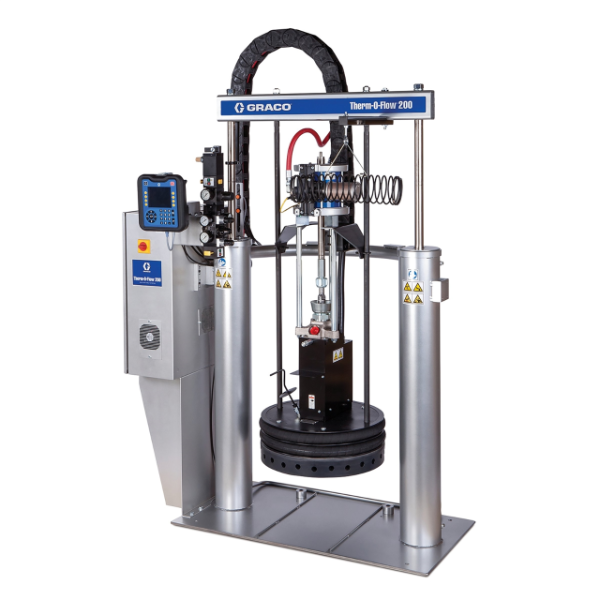Solar Panel Edge Seal: Liquid Applied vs. Tape
Uncover the advantages of pumpable solar edge tape (PSET) over traditional tape application methods for sealing solar panels.
A Solar Panel Manufacturing Challenge
Solar panel manufacturing is complex and challenging. One challenge involves the need to seal the panel against the weather elements to which it will be exposed.
The process of edge sealing the panels can make or break the quality of the panel when it is exposed to weather elements. This article explains the benefits of using dispensing equipment to complete the edge sealing process.
Controlling Excess Moisture
Simply put, moisture is the enemy of solar panels. Moisture ingress into the panel causes poor performance and premature failure, so properly sealing the panel against moisture is of utmost importance. Because of this importance, much time and effort are spent on this step of the manufacturing process.
As engineers assess manufacturing quality and efficiency, the edge seal process remains top of mind because it has such an effect on the end product. As the demand for solar energy grows, the benefits from improving the edge seal process will pay dividends long into the future.
Traditionally, the edge seal process is done with a tape that seals the components together. The tape is applied manually or automatically. While tape has traditionally been the sealant of choice, a newer technology called pumpable solar edge tape (PSET) has proven itself to be a high-quality successor for this important manufacturing step.
The Cost of Edge Sealing with Tape
Edge sealing using tape has historically been the go-to for manufacturers, who apply the tape manually or with automated equipment. However, inefficiencies in time, material waste, and a lack of dimensional flexibility led to the industry looking to new, more versatile solutions.
Time Inefficiency
Downtime Due to Reel Changes
Edge seal tape comes in reels, which are installed on the tape dispense head. During production, these reels must be frequently changed, which results in machine downtime and labor to make the change. This changeover adds a costly interruption to an otherwise streamlined manufacturing line.
Material Waste
Overlap of Tape for Continuous Bead
In order to ensure complete edge seal coverage around the perimeter of the solar panel, edge seal tape is often overlapped in the corners and at the start/stop position.
This overlapping of the tape causes significant squeeze-out of edge seal during the lamination process. This squeeze-out ends up as waste and needs to be manually trimmed from the panel. This additional step contributes to the overall waste of time and materials.
Panel Size Flexibility
Fixed Bead Dimensions
Edge seal tapes have a fixed width and thickness. If your products require several sizes of edge seal tape, this lack of flexibility to quickly make adjustments to the tape size and thickness contributes to the manufacturing process inefficiencies.
Pumpable Solar Edge Tape (PSET)
PSET is a polyisobutylene butyl rubber adhesive. This adhesive is used to effectively prevent outside moisture or other contamination from having a negative influence on the frameless solar panels.
PSET is preferable over tape due to its:
- Good ozone and weathering resistance
- Low permeability to gasses (air and moisture)
- High energy absorption (mechanical strength)
- Good heat resistance (holds up well in sunlight and high temperatures)
- Low temperature flexibility (does not become brittle or weak during low temperature exposure)
- Ability to give tensile strength
Video shows effective dispense of pumpable solar edge tape (PSET). The liquid edge seal is applied in a continuous bead all the way around the perimeter of the solar panel.
Shifting from Edge Tape to PSET
For solar panel manufacturing, long-term success hinges on developing and perfecting the right process. Shifting from edge tape to pumpable solar panel edge tape (PSET) can improve your manufacturing efficiency and product quality.
A reliable trend for solar panel manufacturing, switching to PSET processes has benefitted companies in many ways.
Continuous Bead Flow
The PSET liquid edge seal is applied in a continuous bead all the way around the perimeter of the solar panel. This eliminates the need for overlapping edge seal in the corners and start/stop areas, resulting in a clean and robust seam.
A continuous uniform bead allows for much greater control of any squeeze-out and trimming required after lamination.
Eliminating Non-Value Work
When material can be heated and pumped out of large drums, it eliminates the need to change tape reels, thus reducing manual labor and increasing machine productivity. Heated bulk dispense systems used in tandem with the edge seal material can continuously feed the automated machine and dispense head that apply the edge seal to the solar panel.
Single Source Edge Seal Dispense
For solar manufacturers looking to move from their legacy edge tape application to solar edge tape, Graco hot melt technology paired with precision metering comprise an end-to-end solution for those looking to seamlessly dispense liquid edge seal and make adjustments to the bead quickly.
With throughput capability rated 200 percent better than comparable systems, Graco solutions can quickly benefit those looking to improve their plant operations.
Contact Solar Application Experts
As thermal heating and solar energy are already fundamentally green ventures, Graco looks to impact overall sustainability on a more holistic scale. Contact us to discuss your solar application and see how we can assist with increasing your efficiency and product quality.
Related Articles
Comparing 1k Metering & Dispensing Systems
Shot size and flow rate, material properties, and manufacturing style are important when evaluating the correct metering system for single component sealants or adhesives.
Comparing 2k Meter Mix Dispense Systems
Chart compares advanced two-component meter mix dispense (MMD) systems, including PR-X, PD44, PR70, EFR, and HFR.
Silicone Sealant for Solar Frame Attachment
Discover how a solar panel manufacturer improved bead profile consistency for solar frames using Graco automated silicone dispensing solutions.





